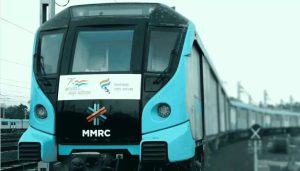Navi Mumbai Faces Worsening Air Quality Crisis With Haze And Low Visibility

Navi Mumbai, 27th December 2024: Each December morning, residents of Navi Mumbai wake up to a greyish haze shrouding the city, masking the skyline and signalling deteriorating air quality.
This issue persists into the evening, with commuters along the Sion-Panvel Highway facing low visibility, and areas such as Vashi and Airoli immersed in dust. The ongoing haze highlights the city’s growing air pollution problem, a trend that mirrors the situation in Mumbai.
Air quality data from monitoring stations across Navi Mumbai paints a concerning picture. For the first 25 days of December, most of the city recorded air quality indices (AQI) in the ‘Moderate’ to ‘Poor’ range, far exceeding safe levels. Key areas such as Kopri-Vashi, Airoli, and Sanpada saw AQI levels consistently above normal limits, with Taloja and Mahape facing the worst conditions.
Throughout December, the AQI in Navi Mumbai stayed above 120, indicating that the air is unhealthy for sensitive groups. In certain areas, locals reported visibility dropping to less than 10 feet due to suspended dust particles, particularly at night.
Ronak Sutaria, Founder and CEO of Respirer Living Sciences, pointed out that while Kalamboli and Tondare stations recorded ‘good’ air quality on some days, these stations did not maintain consistent ‘good’ levels. The majority of the days fell into the ‘moderately polluted’ and ‘poor’ categories. Mahape and Nerul only saw one ‘satisfactory’ day each, with the rest marked as moderately or poorly polluted.
Environmental experts blame the decline in air quality on unregulated construction, industrial emissions, and vehicular pollution. B N Kumar, director of NatConnect Foundation, stressed that unplanned development is significantly harming Navi Mumbai. He also noted that contractors often fail to follow the Standard Operating Procedures (SOPs) introduced by the Navi Mumbai Municipal Corporation (NMMC).
An NMMC official confirmed that inspections across the city led to fines for 87 construction sites that did not comply with the SOPs implemented in August. Basic practices, such as cleaning dumper truck tyres at construction sites, are often neglected, spreading dirt onto roads where it dries and turns into dust. Large projects, including the Navi Mumbai International Airport and highway expansions, have worsened the situation.
Industrial pollution in Navi Mumbai is another major issue, with Taloja’s industrial hub being a significant emitter of harmful gases. The APMC market in Vashi, which houses Asia’s largest wholesale market complex, also suffers from the unchecked operations of trucks with faulty pollution controls. “Authorities are indifferent, and complaints often go unaddressed,” Kumar said.
Amar Durgule, Sub-regional Officer of the Maharashtra Pollution Control Board (MPCB), assured that efforts are ongoing to combat the rising pollution levels in Navi Mumbai. “All industries are closely monitored, and strict actions are taken against those who violate SOPs. Industries operating without proper permission are denied approval,” he explained. The primary issue, however, remains the resuspension of dust, which is challenging to control.
Sutaria emphasized the importance of hyperlocal monitoring to effectively address air pollution. “Localized measures and emission reduction strategies are crucial to minimize long-term exposure risks,” he said. Areas like Kopri-Vashi and Kalamboli are indicative of the region’s worsening air pollution, aggravated by urban activities, vehicle emissions, and nearby industrial operations. “The data underscores the urgent need for region-specific interventions, focused on emission reduction and public health measures,” Sutaria added.
Durgule also spoke about the role of monitoring vans, which complement the five fixed monitoring stations in Navi Mumbai. These vans help monitor air quality in areas outside the reach of the permanent stations. The MPCB has mandated that industries emitting sulfur-based harmful gases switch to compressed natural gas, promoting safer and more environmentally friendly practices.








